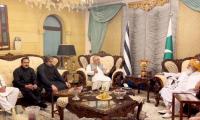ISLAMABAD: The country’s textile exports are projected to reach $16.64 billion by the end of the current fiscal year (FY24), a decrease of $2.68 billion (14%) as compared to the $19.32 billion achieved in FY22. However, this represents a one percent increase from the $16.51 billion in exports registered in FY23.
The non-availability of the Regionally Competitive Energy Tariff (RCET) has resulted in a colossal loss of $2.68 billion to the country, a senior official from the Commerce Ministry told The News on Tuesday. The ministry is concerned that textile exports will not meet expectations by June 30, the end of FY24. In FY22, the sector enjoyed a power tariff of nine cents per unit and a gas tariff of $7.5 per MMBTU, which led to a significant growth in textile exports to $19.32 billion. However, the withdrawal of RCET has resulted in a projected decline in textile exports. This has led to the closure of 40-50% of industrial units in the country, causing widespread unemployment and a decline in exports. The Ministry of Commerce has written to the Power Division requesting the restoration of RCET to boost exports and encourage international buyers to expand their sourcing from Pakistan.
The letter highlights that the industrial sector is currently providing a cross-subsidy of Rs222 billion in the power sector and Rs100 billion in the gas sector to domestic consumers. If this cross-subsidy is withdrawn, the energy tariff for the industrial sector will become competitive with regional economies like India, Bangladesh, and Vietnam, making Pakistan’s export products more competitive in the international market.







